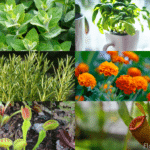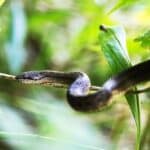You’ve noticed that your once vibrant spider plant’s leaves are starting to turn yellow. It’s distressing, isn’t it? Especially when you’re unsure of the cause or how to treat it.
Don’t worry, you’re not alone. Many plant enthusiasts have faced this issue, and there’s a wealth of knowledge available to help you restore your plant’s health.
Understanding Spider Plant Yellow Leaves
Common Causes of Yellow Leaves
Overwatering represents a primary reason for spider plant leaves turning yellow. Too much water leads to waterlogged soil, depriving the roots of essential oxygen. Over time, it results in root rot, causing leaves to yellow and wilt.
Similarly, inadequate watering dries out the root system. Without the necessary hydration, spider plants can’t perform photosynthesis effectively, presenting as yellow leaves.
Furthermore, exposure to direct sunlight for extended periods can cause leaf burn. Spider plants prefer indirect light; hence, placing them in direct sunlight yellow’s the leaves.
Lastly, nutritional deficiencies also cause the leaf yellowing in spider plants. Lack of essential nutrients like Nitrogen, Potassium, and Iron leads to chlorosis, characterized by yellow leaves.
The Lifecycle of Spider Plant Leaves
The lifecycle of spider plant leaves begins with the emergence of a new leaf shoot from the center of the plant. The leaf matures, changing from light green to a rich, dark green color over several weeks.
As the leaf grows older, it starts losing its vibrant coloration, signifying the end of its lifecycle. The leaf eventually turns yellow and brown before it dries out completely.
The plant then absorbs the remaining nutrients from the old leaf, ultimately causing it to fall off. You’ll notice a new leaf shoot growing to replace the old leaf, repeating the lifecycle once again.
These yellow leaves are, in fact, a normal part of the spider plant’s lifecycle. However, if numerous leaves start yellowing before they age, there may well be an underlying issue needing your attention.
Assessing Spider Plant Health

As a plant enthusiast, it’s crucial for you to know that the health of your spider plant can reflect its growing conditions. In this section, we’ll share signs that may indicate your plant is showing symptoms of nutrient deficiency or suboptimal watering.
Signs of Nutrient Deficiency
When your spider plant lacks essential nutrients, its leaves can exhibit distinct signs. These include browning tips, fading color, slowed growth, and, yes, the yellow leaves that can be a cause of stress.
It’s common knowledge that spider plants crave nourishment — they thrive best with a balanced blend of Nitrogen, Phosphorus, and Potassium, otherwise known as NPK fertilizers. Remember, an unhealthy diet can rob your plant of its lush, green presentation.
Overwatering vs. Underwatering Symptoms
Often, the challenge lies in finding the right balance between overwatering and underwatering. Overwatered spider plants tend to have yellowing leaves with a soggy feel, while underwatered plants feature more brittle, crispy leaves.
Another telltale sign is root condition; rotting roots indicate overwatering, while shriveled roots suggest insufficient hydration. As a plant owner, deciphering these signs can lead to remedial action and, eventually, a healthier, happier plant.
Proper Care for Spider Plants
Spider plants, resilient as they are, also call for some specific conditions in order to thrive. Let’s delve into the details.
Optimal Watering Practices
Spider plants thrive when watered accurately. Best practice dictates watering these green companions thoroughly but not frequently. Aim to keep the soil moist, but avoid excess water as this leads to root rot, a common issue amongst overwatered plants.
An example of a good practice includes soaking the plant thoroughly and then allowing the soil to dry out before the next watering session. Further, if you spot yellow leaves, it often denotes overwatering, while brown tips can hint at underwatering.
Ideal Light Conditions
Sunlight plays an integral part in the spider plant’s wellbeing. Bright, indirect light serves these plants best. Exposing them to direct sunlight may well result in scorching their leaves.
An east or west-facing window that gets plenty of light, albeit filtered through a curtain, is a good spot to place your spider plant. If the leaf tips start turning brown, it’s usually an indication that the plant is getting too much light.
Temperature and Humidity Needs
Spider plants preference level surrounds moderate temperatures and high humidity. A range between 70 – 90°F (21 – 32°C) is generally favorable for them. Spider plants appreciate higher humidity levels, so you may consider placing a tray of water near them to increase ambient humidity.
However, remember, they can tolerate a wide range of conditions, including cooler temperatures and lower humidity, so don’t fret too much; they’re sturdy companions.
Remedial Actions for Yellow Leaves
Reviving Overwatered Spider Plants
Rescuing a drowned Spider Plant begins with reducing water intake. Limit watering to once every 10-14 days, permitting the soil to dry between sessions. Aerate the soil by gently loosening it, facilitating better air circulation for the roots.
Additionally, you could change the pot to one with proper drainage, potentially with a blend of potting soil and perlite in a 4:1 ratio. Such ration could assist in preventing waterlogged conditions which lead to root rot, an often fatal condition.
Correcting Nutrient Imbalances
Addressing a nutrient imbalance, conversely, involves revising your fertilization routine. Adopt a monthly regimen using a balanced liquid houseplant fertilizer. Watch out for excessive salt buildup in the soil—a condition that may manifest from improper or over-fertilization.
It’s possible to eliminate such toxins by effectively sanitizing the plant pot. This method involves immersing the pot in a bucket full of water for a few hours, allowing the salt residues to dissolve and seep out.
When to Consult an Expert
Despite your best efforts, if the yellowing of your Spider Plant’s leaves persists, it suggests a more complex problem. Consulting a professional horticulturist becomes a wise choice at this point. They can provide an accurate diagnosis and practical solutions to ensure your plant’s health.
Equipped with professional knowledge of plant diseases, pests, and care, they can turn the tides in favor of your ailing plant. Plus, valuable lessons gleaned from these experts arm you with the skills and insights to preemptively avert similar issues in the future.
Preventing Yellow Leaves in the Future
Routine Care Schedule
To minimize occurrences of yellow leaves on your spider plants in the future, establishing a consistent care routine is paramount. A routine enables you to constantly monitor and promptly respond to your plant’s needs.
For example, determine the plant’s watering needs based on variables like the current season or the indoor environment, and adapt your watering pattern accordingly. Remember, both under and overwatering can lead to yellow leaves, so strike a balance.
Also, keep track of your spider plant’s light requirements. Spider plants are known for their shade tolerance, but they also thrive in indirect sunlight. Ergo, finding a spot that receives medium light throughout the day fits the bill perfectly.
The Importance of Proper Potting Medium
Additionally, the success of your spider plant largely hinges on the choice of potting medium. A potting medium that drains well can make all the difference between plump, green leaves and yellow, wilting ones.
Spider plants prefer a loamy, well-draining mix—preferably one that’s slightly acidic. Attaining the right soil mixture will help your plant avoid root rot— a potential cause of yellow leaves—you’ve probably gathered from previous portions of this article.
Experimenting with organic matter in your potting mix like compost or coarse bark can elevate your plant’s health. Additionally, ideal potting conditions aren’t just about the soil— the pots themselves matter. Spider plants do well in pots that allow their roots to breathe, so consider terracotta or other porous materials.
Remember, spider plants are tough, adaptable houseplants, but with your vigilant care and the right conditions, you’ll likely see less yellowing and more thriving in the future.
Frequently Asked Questions
Why are my spider plant leaves turning yellow?
Your spider plant leaves could be turning yellow due to overwatering, underwatering, excessive sunlight exposure, or a lack of proper nutrition. However, it’s natural for some leaves to yellow as the plant ages and they are replaced by new shoots.
Is yellowing always a sign of a problem in my spider plant?
Not always. While an excess number of yellow leaves might indicate an underlying problem, it’s normal for spider plants to have some yellow leaves as part of their lifecycle.
What actions can I take if my spider plant’s leaves are turning yellow?
You can adjust the watering frequency, aerate the soil, apply proper fertilization, or consult with a horticulturist if yellowing persists and appears excessive.
How can I prevent yellow leaves on my spider plant in the future?
Future yellowing can be prevented by establishing a routine care schedule, monitoring and regulating watering, choosing a suitable light condition, selecting the right potting medium, and using pots that promote optimal root health.
Will adjusting my plant-care habits lead to healthier spider plants?
Absolutely. With proper care including adjusting watering, prioritizing optimal sunlight exposure, choosing the correct potting medium, and using suitable pots, you can expect healthier plants with less yellowing and improved growth.
Image by generatedp – Myimagine/depositphotos
Up next:







